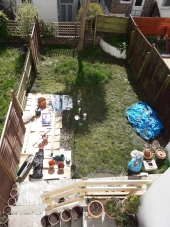posted 7 years ago
Dustin's method sounds viable, but I think it would be easier to quantify things that exhibit a colour change, like a pH test, rather than a smell or texture.
With a colour change, you can have a colour swatch that transitions across the whole visible spectrum. You can then record what known values' colours are, and compare them against test samples. I think you could even get a number of different readings of known quantities, record the colours, and then do the math as to how the amount in the sample changes for each measured shift in colour.
But I agree, without the ability to grade the amounts present, we're essentially just testing for the presence or absence of NPK.
I wish I had a list of different plants that could be employed to tell us, based on their growth characteristics, what the soil conditions are. I know farmers have been doing so for ages in their fields, like if there's lots of clover in the field, that indicates the presence of, what, limestone underneath (I think, I might be wrong)? I would sow the soil testing guild in new beds, or on the perimeter of existing ones, giving me a constant, real-time feedback on what is actually bioavailable for my plants.
-CK
A human being should be able to change a diaper, plan an invasion, butcher a hog, conn a ship, design a building, write a sonnet, balance accounts, build a wall, set a bone, comfort the dying, take orders, give orders, cooperate, act alone, solve equations, analyze a new problem, pitch manure, program a computer, cook a tasty meal, fight efficiently, die gallantly. Specialization is for insects.
-Robert A. Heinlein





